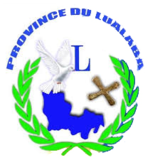Katanga Cross
- View a machine-translated version of the Spanish article.
- Machine translation, like DeepL or Google Translate, is a useful starting point for translations, but translators must revise errors as necessary and confirm that the translation is accurate, rather than simply copy-pasting machine-translated text into the English Wikipedia.
- Consider adding a topic to this template: there are already 5,022 articles in the main category, and specifying
|topic=will aid in categorization. - Do not translate text that appears unreliable or low-quality. If possible, verify the text with references provided in the foreign-language article.
- You must provide copyright attribution in the edit summary accompanying your translation by providing an interlanguage link to the source of your translation. A model attribution edit summary is
Content in this edit is translated from the existing Spanish Wikipedia article at [[:es:Cruz de Katanga]]; see its history for attribution. - You may also add the template
{{Translated|es|Cruz de Katanga}}to the talk page. - For more guidance, see Wikipedia:Translation.

A Katanga Cross (French: croisette du Katanga), also called a handa, is a cast copper ingot in the shape of an equal-armed cross which was once used as a form of currency in parts of what is now the Democratic Republic of the Congo (DRC) in the 19th and early 20th centuries. Katanga crosses were made in various sizes, typically about 20 centimetres (7.9 in) across, and weighing about 1 kilogram (2.2 lb). The name derives from Katanga, a rich copper mining region in the south-eastern portion of the DRC.[1]
These X-shaped ingots were cast by local coppersmiths by pouring molten copper into sand molds.[1]
Original value
During its period of currency, a Katanga cross would buy about 10 kilograms (22 lb) of flour, five or six fowls, or six axes. Ten would buy a gun.[1]
Modern uses
In 1960, Katanga unilaterally seceded from the newly independent Congo-Léopoldville and declared its own independence as the State of Katanga. The Katanga state used the cross as a national symbol; three red katanga crosses appeared in the lower hoist of its flag. Coins issued by Katanga in 1961 also depicted the Katanga Cross. The State of Katanga was forcibly reunited with the Congo in 1963.[1]
-
 The emblem of Lualaba Province.
The emblem of Lualaba Province. -
 The emblem of Haut-Katanga Province.
The emblem of Haut-Katanga Province. -
 The flag of the historical breakaway State of Katanga.
The flag of the historical breakaway State of Katanga.
See also
- Manillas
References
- ^ a b c d "The Unusual Katanga Cross". www.pcgs.com. Retrieved 2017-09-17.
Further reading

- de Maret, Pierre (1981). "L'Evolution Monetaire du Shaba Central Entre le 7e et le 18e Siecle". African Economic History. 10: 117–49. JSTOR 3601297.














